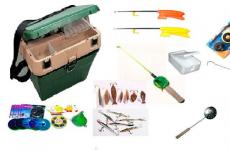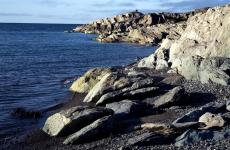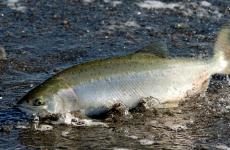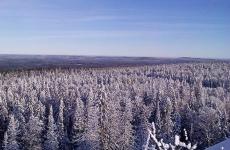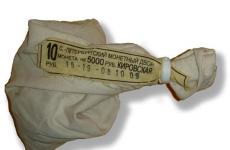Countries bordering Austria. Description of Austria
Due to the refugee situation, many European Schengen countries have introduced border controls on their borders. Because of this, traffic on weekends is very bad. And there is no improvement yet.
This has an impact not only on highways, but also on federal, state and county roads around major cities. All vehicles that may contain refugees are stopped for inspection. Traffic is mainly difficult in the direction from south to north.
Border control in Austria
Since autumn 2015, Austria has controlled its borders with Hungary, Slovenia and Slovakia. As a result, waiting times on these routes may increase. The nature and extent of inspections are unpredictable, so an accurate forecast is not possible. Waiting problems only apply to the direction of entry into Austria.
The longest queues form at the border crossing Spielfeld on the European route E59 Maribor - Graz. This applies to both the A9 motorway and the parallel B67 motorway.
Border crossing Spielfeld on the B67 highway was closed for a long time. It is now open during the day from 6 a.m. to 10 p.m. At night, from 10 pm to 6 am, you can only travel through the border checkpoint located on the A9 motorway.
A calmer situation is observed at border crossings Nickelsdorf European route E60 Budapest - Vienna and Kittsee European route E58 Bratislava - Vienna.
Reason: Very few refugees enter Austria via Hungary and Slovakia. However, the presence of a queue at the border cannot be completely ruled out.
Italy
Since the beginning of April, Italy's borders have been under strict control. The main focus is on the European routes E45 Brennero - Innsbruck, E66 Bruneck - Lienz and the Nauders - Curon Venosta highway (B180/SS40). The reason is the possible redirection of the flow of refugees from the Balkan region to Germany through Italy.

In the area of the Brennero junction, the speed is generally reduced to 30 km/h. Control is carried out on the Austrian side. Vehicles subject to inspection are sent to a separate control area. In addition, Italian police are checking suspicious vehicles in the area between Bressanone and Vipiteno.
Alternative routes will only appear at the end of May, when the mountain roads via Timmelsjoch (B186/SS44bis) and Stallersattel (L25/SP44) open after the winter period.
Balkan route
It makes sense to plan for long waits at the border when entering from Macedonia to Serbia, from Serbia to Croatia and from Croatia to Slovenia. This applies to both the main route Skopje - Nis - Belgrade - Zagreb - Ljubljana and alternative routes.
The current situation at the borders may change at any time. The above-mentioned countries, as of March 7, will only allow entry to persons holding a visa or a valid residence permit. How this will affect the situation is currently difficult to assess.
Control on Bulgaria's borders with Greece and Turkey has also been strengthened. This affects the transition time Captain Andreevo/Kapikule on the European route E80 Istanbul - Sofia.
Greece
A special situation on the borders between Greece and Macedonia. There are tens of thousands of refugees here. Occasionally there are riots. All this can disrupt the normal flow of travel. This especially applies to the main border crossing Evzoni/Gevgelja on the European route E75 Thessaloniki - Skopje.

Hungary
Since the end of 2015, the borders between Hungary and Serbia and Hungary and Croatia have been fenced off. As the government continues to enforce stricter checks when entering Hungary through the border crossing Horgos-Röszke On the European route E75 Belgrade - Budapest and at all other border crossings with Serbia and Croatia, long waiting times are likely. The same applies to transitions from Romania.
Scandinavia
Border crossing controls have also extended to the Scandinavian countries. Since December, Sweden has stepped up surveillance of its borders. Concerns include the road across the Öresundbrücke bridge and ferry ports in the Baltic Sea.
To prevent an influx and accumulation of refugees in Copenhagen, Denmark has also strengthened controls along its borders with Germany. There are no significant traffic jams at this time, but motorists should pay close attention to traffic reports.

In Norway, road travelers are generally required to present a passport or identity card when crossing land borders and upon arrival on ferries.
Benelux countries
If the refugee crisis continues longer, the Netherlands and Belgium are considering introducing tighter controls on their borders with Germany. The Netherlands has been installing mobile posts since February. However, systematic border controls are not yet in place.
Switzerland
The Swiss government is currently discussing the introduction of border controls, but there is still no final decision.
If such a decision is made, border controls are expected, in particular, on the roads through the Saint Gotthard and San Bernardino passes, as well as on the borders with Germany.
It is necessary to closely monitor the current situation in the chosen direction in the media. Plan alternative routes so you can quickly make changes if an unfavorable situation arises.
Travelers, including children, must carry identification documents with them at all times.
Do not put strangers into the car under any circumstances, especially when crossing the border. Thus, the Hungarian Foreign Ministry stated that assistance provided during illegal crossing of the state border, in accordance with Hungarian legislation, falls under the definition of smuggling and is punishable by imprisonment for up to eight years.

Special note for motorhome drivers: Be careful when boarding a ferry in Greek ports (Igoumenitsa, Patras)! In recent years, the number of free riders found in motorhomes has increased.
Illegal immigrants hid in such vehicles to travel across the sea to Italy. If the “hares” are discovered, this will have disastrous consequences for gullible tourists. Such crimes are classified as smuggling and are punishable by heavy fines and confiscation of vehicles.
Conclusion
Will border controls be permanent? The European legal framework on this issue is unclear. However, the European Commission is currently pursuing a goal of ending border controls by November.
So this summer, you should be prepared for the fact that moving may take a little longer than before. Take this into account when planning your route!
Austria located in Central Europe. In the north it borders with Germany and the Czech Republic, in the east with Hungary and Slovakia, in the south with Italy and Slovenia, and in the west with Liechtenstein and Switzerland. It has no access to the sea. Most of the territory is occupied by the Alps and their foothills, the highest point is Mount Großglockner (3797 m).
The name Austria comes from the Old German Ostarrichi - “eastern country”.
Official name: Republic of Austria
Capital:
Territory area: 83.8 sq. km
Total population: 8.3 million people (2009)
Administrative division: Consists of 8 federal states and the capital district equivalent to them.
Form of government: Republic, with a federal government structure.
Head of State: The President is elected for 6 years by universal suffrage.
Population composition: 90% of the population are Austrians. About 9% come from other countries: Yugoslavs (35%), Turks (20%) and Bosnians (10%). In addition, the country is home to small groups of Croats, Hungarians (Burgenland), Slovenes (southern Carinthia), Czechs and Roma.
Official language: German. Most people working in the tourism industry understand and speak English. In the border areas they speak: Hungarian, Slovenian, Croatian, Czech, Italian.
Religion: 78% Roman Catholic, 5% Protestant, 4.5% other religions, 9% undecided.
Internet domain: .at
Mains voltage: ~220 V, 50 Hz
Country dialing code: 43
Country barcode: 900-919
Description of the country

Austria is an alpine country in the heart of Europe. Here you will find a variety of landscapes, amazing flora and fauna. Austria is proud of its history, and its modern, eventful cultural life attracts tourists from all over the world. Austrians greet their guests in a friendly manner. Austrian hospitality has become a tradition.
Climate

The climate in Austria is temperate, mid-continental. On the northern slopes of the Alps, winters are characteristic of a continental climate, and summers are quite hot. In the south of the country the climate is almost Mediterranean. In some places there is snow in the mountains for 7-8 months a year.
There are three climatic zones in Austria:
East of Austria
The continental climate prevails here, which is characterized by a relatively small amount of precipitation (about 800 mm), warm, long summers (in mid-July - above + 19 ° C), fairly cold winters, a significant difference between day and night, as well as summer and winter temperatures .
Western Austria - intra-Alpine regions
The local climate, defined as alpine, is characterized by high rainfall, short summers and long winters.
Central Austria
Here the climate is transitional - moderately humid, Central European. The average temperature in mid-June is +14°C, +19°C.
The average temperature in January is from -1°C to -5°C, in summer - +15°C, +18°C, in the south +25°C, + 27°C.
Geography

The Republic of Austria is a continental state located in the southern part of Central Europe and occupies part of the Eastern Alps and the territory along the Danube River. The country is quite close to the Mediterranean region. In Austria, natural, climatic and plant zones are closely intertwined. Due to its geographical location, Austria has long been a crossroads of transport routes connecting the most important European centers of economics and culture.
Austria is a federal state with an area of 83,858 sq. km, including nine federal states: Burgenland, Vienna, Upper Austria, Lower Austria, Salzburg, Styria, Tyrol, Carinthia, Vorarlberg.
Austria borders Switzerland, Liechtenstein, Germany, the Czech Republic, Slovakia, Hungary, Slovenia and Italy. The length of Austria's state borders with these countries is 2,706 km, of which 816 km are with Germany, 466 km with the Czech Republic, 107 km with Slovakia, 354 km with Hungary, 330 km with Slovenia, 430 km with Italy, 166 km with Switzerland and 35 km with Liechtenstein.
The highest mountain in Austria is Grossglockner (3797 m), the most important river is the Danube (about 350 km flows through Austria).
Flora and fauna

Vegetable world
The diversity of relief and climate determines the richness of vegetation species. Vegetation zones in flat and hilly areas generally coincide with climatic zones. Central European vegetation, common in Austria, is characterized by oak-beech forests, and above 500 m - beech-spruce forests. Above 1,200 m, spruce predominates, with larch and European cedar pine occurring.
Austria is one of the richest countries in Europe with forests; they cover about 46% of its territory. In many areas of the alpine foothills, arable land has replaced forests. Especially on the northern Alpine slopes, at an altitude of approximately 600 m, high-mountain pastures - "almas" - predominate. The typical Pannonian vegetation is shrubland, mixed deciduous forest and heather steppe. To the east of Lake Neusiedler See in Burgenland, the specific flora of the salt-steppe predominates.

Animal world
Austria is characterized by Central European fauna: roe deer, deer, hare, pheasant, partridge, fox, bursuk, marten, squirrel. Typical representatives of the alpine fauna are chamois, marmot, mountain jackdaw and the newly introduced stone goat. The fauna of the Pannonian Lowland is characterized by an abundance of birds, in particular in the coastal reeds of the only steppe lake in Central Europe, Neusiedler See (purple heron, colonies of spoonbills and avocets).
Attractions

Culture and museums of Austria
Many museums in Austria are dedicated to famous musicians. These are two Mozart house museums in Salzburg, the Brahms house in Mürzzuschlag and many memorials in Vienna, including four Beethoven house museums. Austria has a large number of architectural monuments - cathedrals, palaces, castles and monasteries. The main art treasures are collected in Vienna museums: Schönbrunn - the residence of the Austrian emperors, the Albertina Gallery and the Kunsthistorisches Museum. See all the sights of Austria, as well as excursions around Austria in the new catalogs of excursions and attractions.
Vienna: historical center
Here are: the square "Am Hof" - "At the Court", the church "Am Hof" or the Church of the Nine Angel Choirs, the oldest church in Vienna - the Church of St. Ruprecht, the Ruprechts Church, "Maria am Gestad" - the Church of Mary on the coast, the square St. Stephen's with the famous cathedral for which it is named, the Albertina Museum, which houses 200,000 original works of art and much more.
The Habsburg summer residence is also a must-see. Like Peterhof and Versailles, this is an ensemble that combines architecture and nature, where the park becomes a continuation of the palace. An exhibition of carriages is open in Schönbrunn. The French park is decorated with mythological sculptures and topped by the Neptune Fountain at the foot of the hill. You can visit the summer palace theater, as well as several museums and a zoo.
Prater
The symbol of the Prater and one of the symbols of Vienna is the Riesenrad, a giant Ferris wheel built in 1896-97 by the English engineer Walter Basset for the Vienna World Exhibition. Rising in one of its carriages to a height of approximately 65 meters, you will be able to take in the panorama of Vienna. There is a lot of entertainment here for any age - the "road of horrors", a carousel, shooting galleries, modern attractions with breathtaking speed and flips in the air.
Boxing ring
On the boulevard, which has its own “Ring-Strassenstil”, there are many interesting buildings: the neo-Gothic Rathaus - the Vienna City Hall, the Greek-style Parliament, the most famous dramatic theater in Vienna - the Burgtheater, the musical Mecca of Vienna - the Staats Oper, where the most famous ball takes place in February Austria - operanball, art-historical and natural-historical museums and several parks.
Hundertwasser House
There are almost no straight lines in the architecture of this house. Uneven floors and flights of stairs symbolize forest and mountain paths, and crooked, unevenly plastered and painted walls resemble curtains. The interior decoration of the walls and floors of the house contains natural motifs in the form of applique, and all the flat elements of the building are covered with earth and plants are planted.
Underground lake Seegrotte - the largest underground lake in Europe
As a result of natural transformations, one of the most impressive natural monuments on Earth arose in the south of Lower Austria. This is the Seegrotte underground lake in the town of Hinterbruhl. It all started in 1912. During blasting at the Hinterbrühl gypsum mine, more than 20 million liters of water were expelled from the so-called “water bag”. Water rushed into the passages and adits. As a result of this “water exodus,” the largest underground lake in Europe appeared. Work at the mine was stopped and the mine was closed. Only in the 30s. In the 20th century, an international group of speleologists rediscovered the underground lake, describing the unique underwater world, the play of water and soil, which together created a breathtaking spectacle.
Admired by what they saw, specialists took the initiative and made it possible for everyone to discover this rare attraction. In 1932, access to the underground lake was opened for the first time, then as an overview of the mine. And from day one, Seegrotte has become the number one tourist attraction. Last year alone, 250,000 people from all over the world visited there.
Ancient Austria - archaeological park Carnuntum
One of the most interesting attractions in Austria is the archaeological park Carnuntum, located between Vienna and Bratislava. On the territory of the municipal districts of Petronell-Carnuntum and Bad Deutsch-Altenburg, at the intersection of ancient trade routes, right on the southern bank of the Danube, there was once the capital of the Roman province of Upper Pannonia - the city of Carnuntum. Here you will learn about the history of Carnuntum, learn about the museums and annual performances that take place in this archaeological park.
Banks and currency

Since 01.01.2002, in Austria, as in all countries of the European Union, the euro has been used as a means of payment, and shillings have lost their role as the national currency. The following banknotes came into circulation: 5, 10, 20, 50,100,200, 500 euros, coins of 1.2, 5.10, 20.50 cents, as well as 1 and 2 euros.
Opening hours of Austrian banks: Monday, Tuesday, Wednesday and Friday (8:00-12:00 and 13:30-15:00), and on Thursday - from 8:00 to 12:30 and from 13:30 to 17: thirty.
Useful information for tourists

There are 2 tourist seasons - summer (July-August) and winter (Christmas). The best time to visit Vienna is late spring and early autumn. The ski season lasts until mid-April. To use the lifts, you must purchase single or one-day tickets (there are several categories) or more profitable “ski passes” for several days (for those valid for more than 10 days, a photograph is required).
Tourist plastic cards provide free travel on any type of public transport, free (or cheaper) visits to museums and excursions, and all kinds of discounts.
Free maps of Vienna, transport routes, excursion programs and brochures, including in Russian, can be obtained from the Wien-Turismus office on Albertinaplatz.
The tip is 5% of the order value; in large restaurants it is customary to leave 10% of the bill amount. The waiter will definitely return the change for the bill, and after that, in the same napkin, you need to give him a tip. You can leave small coins in bars and cafes. In street cafes they do not give tips. It is customary for a taxi driver to pay 10% over the meter; you can simply not take the change from the change.
Austria is located on the continent of Europe and the occupied territory of Austria is 83871. The population of Austria is 8373000 people. The capital of Austria is located in the city of Vienna. The form of government in Austria is a Federal Republic. In Austria they speak German. Who does Austria border with: Germany, Czech Republic, Slovakia, Hungary, Slovenia, Italy, Switzerland, Liechtenstein.Austria is a country of cool forests, mountain meadows, lakes and picturesque alpine peaks. Such great composers as Mahler, Gluck, Brahms, Haydn, Schumert, Mozart and Strauss lived and worked in this amazing region. For a long time, the country has been famous for its magnificent ski resorts, and now skiing and Austria are inseparable concepts. All Austrian ski resorts are famous for their excellent conditions for sports, not only in winter, but also in summer, when steep snow-white slopes turn into picturesque alpine meadows, saturated with the aromas of delicate wildflowers and herbs. In addition, Austrian resorts provide excellent opportunities for treatment, relaxing holidays or exciting excursions. The hospitality and cordiality of the Austrians, combined with the ability to clearly organize tourist services, are famous throughout the world.
Austria is also home to taverns with an indescribable flavor and incomparable cuisine, traditional villages and charming cozy mountain houses that retain the charm of antiquity.
A country with such a great past and rich traditions cannot but attract with its historical and cultural attractions. You can enjoy them at any time of the year, but the best time to visit Austria is considered to be winter, when the snow-covered streets of Salzburg and the shining spiers of the palaces and cathedrals of Imperial Vienna look especially picturesque.
Among the main attractions of the Austrian capital are the Graben Street, St. Stephen's Church, St. Ruprecht's Cathedral, Vienna Amusement Park, Schönbrunn Castle, Vatican Church, Belvedere Palace, City Hall, a meeting of the musical community, the Museum of Art with a collection of musical instruments from different eras, the Museum graphics, the Art Museum, the Chapel of St. Bernard, the ancient parks Prater and Augarten, Staatsoper, Burgtheater, the Parliament and Town Hall buildings and much more.
The Albertina Museum, the Jewish Museum, the Museum of Art, as well as the Vienna Woods, the ruins of the ancient Durnstein fortress, located seventy kilometers from the capital of the country, and the picturesque monasteries in Heiligenkreutz are very popular among city guests. The pearl of Vienna is rightfully considered the Hofburg, which was once the imperial court (thirteenth century), with the so-called Schatzkammer - one of the richest gold storehouses in the whole world. The famous Order of the Golden Fleece, the highest order of Spain and Austria, keeps its greatest treasures here. Some of the most beautiful masterpieces in the collection include the crown of the Roman Empire, which was made in 962, and the Austrian crown - the Habsburgs were crowned with it.
The city of Salzburg is no less popular. There are also plenty of attractions here. These are, for example, the picturesque Salzburg Lakes, the Baroque Museum, the house where the great Mozart was born, the Salzburg Cathedral, which was founded in the eighth century, with the magnificent residence of the prince-bishops, the Helburn palaces with a beautiful park and fountains, the Eisriesenwelt cave, which is also called “ the world of the frost giants”, Salt Mountains and Mirabel Geerfidegasse. Carinthia and Styria attract with majestic nature and many medieval castles.
Austria is a real fairy tale with the gloomy but surprisingly romantic Hohensalzburg Castle towering above the city, winding narrow streets imbued with the spirit of the Middle Ages, and tiny cozy coffee shops with a few tables where you can enjoy traditional mulled wine or thick, incredibly aromatic chocolate.
There is an airport in the capital of each state. The main marinas are located in Linz and near Vienna. The largest cities are Vienna, Graz, Linz and Salzburg.
Austria, whose territory is elongated in the form of a wedge, strongly tapering to the west, occupies little space on the map. Its area is 83.8 thousand km2. It facilitates its communication with other European countries, of which it directly borders seven. The most important in terms of economic potential and the most densely populated eastern part of the country borders the Czech Republic and Slovakia, in the north with, in the southeast with. This provides Austria with favorable geographical conditions for mutually beneficial trade with neighboring countries. In the west, Austria borders on and is closely connected with it. In the northwest and south it is adjacent to and.
Its position in the center of Europe makes Austria the crossroads of a number of trans-European meridional routes (from the Scandinavian and central European states through the Alpine passes of Brenner and Semmering to Italy and other countries). Servicing the transit transport of goods and passengers provides Austria with certain income in foreign currency. In addition, as can be easily determined from a physical map, the state borders of Austria for the most part coincide with natural boundaries - mountain ranges or. Only with Hungary, and (for a short distance) they pass through almost flat terrain.
When our compatriot, heading to Austria by train, crosses the Czech-Austrian border in the north-eastern corner of the country, he is somewhat disappointed. Where is alpine Austria? All around, as far as the eye can see, is a treeless, plowed plain, as flat as a table. Here and there you can see green gardens and vineyards, brick houses and lonely trees on the borders and along the roads. and hilly lowlands extend from here far to the south along the entire border with Hungary and occupy 20% of the territory. But having reached Vienna, we find ourselves in a more typical natural environment for Austria: mountains, the Vienna (Wienerwald) - the north-eastern outpost of the mighty Alps and a sublime, hilly, wide and open valley, rising noticeably in a westerly direction. If you climb one of the peaks of the Vienna Woods, for example, Kahlenberg (“Bald Mountain”), then far to the north and northwest in the blue haze beyond the Danube you can see the low, ridged, forest-covered granite ridges of Sumava, only some of the peaks of which rise several above 700 meters. This ancient hill occupies 0.1 of the country's territory. Undoubtedly, they are dominant in Austria; they (together with the foothills) occupy 70% of the country’s area. These are the Eastern Alps. This is the customary name for the alpine part lying to the east of the valley along which the state border passes here. What is the difference between the Eastern Alps and the Western Alps? To the east of the Rhine fault, the Alpine ridges take a latitudinal direction, begin to fan out and descend. The Eastern Alps are wider and lower than the Western Alps and are more accessible. There are fewer glaciers here, and the largest ones are about half as long as in Switzerland. The Eastern Alps have more and especially forests, and the Eastern Alps are much richer than the Western Alps.
If you cross the Alps from north to south, it is easy to notice that the geological structure and composition of their constituents are located symmetrically relative to the axial zone. This zone is the highest and most powerful group of ridges covered with glaciers and snow, among which the Hohe Tauern stands out with the highest point of the country - the double-headed peak Glossglockner (“Big Ringer”), reaching 3997 m; Ötztal, Stubai, Zillertai Alps. All of them, together with the adjacent ridges to the west and east, are composed of hard crystalline rocks - granites, gneisses, crystalline schists.
The largest - Pasterze - has a length of about 10 km and an area of 32 km 2. To the north and south of the axial zone lie ridges composed of hard sedimentary rocks, mainly limestones and dolomites: the Lichtal Alps, Karwendel, Dachstein, Hochschwat and other Northern Limestone ridges Alps up to the Vienna Woods mentioned above at the extreme
northeast. In contrast to the peaked peaks of crystalline ridges, limestone mountains are giant blocks with more or less flat, slightly inclined surfaces and almost vertical or even overhanging slopes. The years are mostly bare, and there are sinkholes, caves and other forms of karst formed by melted rainwater in soluble limestone and dolomite.
The peripheral zone of the Alps is formed by low, softly contoured peaks and slopes of the Pre-Alps, composed of loose sedimentary rocks. Within Austria, this zone is well defined in the north, but absent in the south. One of the features of the Alps is that they are dissected by deep and wide transverse valleys, due to which the deep parts of the Alps are relatively easily accessible, and low, convenient passes make it possible to cross the country from north to south in a number of places without much difficulty. Thus, the famous Brenner Pass has a height of 1371 m, and the Semmering Pass - 985 m. It is no coincidence that roads have long been built through the Alpine passes, some without tunnels.
